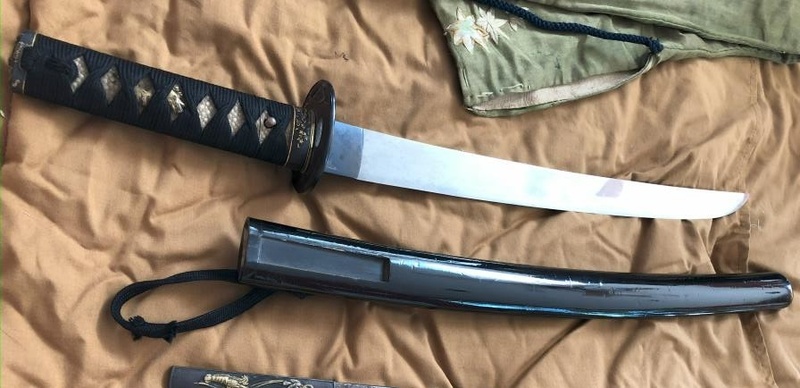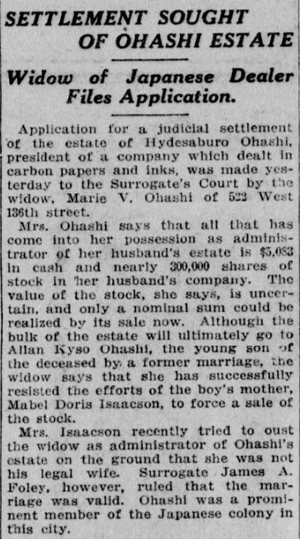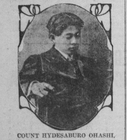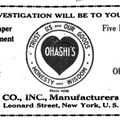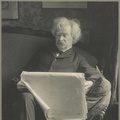During Ohashi’s time in America, US-Japan political relations deteriorated steadily. After Japan’s victory over Russia in 1905, it was generally thought that the Japanese would fight America next. Never mind that some people on both sides of the Pacific thought that Japan went to war as a proxy for the United States. In 1905, the American Federation of Labor requested that Congress to immediately enact legislation to exclude Japanese workers from the United States and its overseas possessions. In 1906, President Theodore Roosevelt had to intervene after anti-immigration agitation in California boiled over on the issue of Japanese children from attending public school.1 In about 1907, military strategists in America and Japan each saw the other side as the antagonist in the next war, while the two nations negotiated migration control (soon leading to the “Gentleman’s Agreement” to restrain Japanese entry to the United States). Legal and social discrimination against Japanese, especially in the West and South, peaked in 1924 when a landmark immigrant exclusion act was passed by Congress.
Racism (then believed by many to have a sound scientific basis) and immigration issues aside, the larger environment of America-Japan relations within which Ohashi did business and sought to stimulate social reform harbored economic, industrial, and commercial issues that spelled trouble. That is, the Great War raised and brought conflicts into view. Having signed an allyship agreement with Great Britain in 1902, Japan declared war on Germany well before President Woodrow Wilson did. Although Japan declined to send troops to Europe, she sent transport ships, patrolled Pacific sea lanes, provided munitions to Russia, and damaged, sank, or captured most of the German Pacific fleet that was at that country’s naval base at Tsingtau (青島; today, Qinqdao). Although Wilson suppressed a racial equality clause sponsored by Japan for inclusion in the League of Nations Covenant negotiated at the Paris Peace Conference, Japan received control of Tsingtau and a mandate over German possessions north of the Equator.
These were nothing compared to indirect benefits. Japan did not lose a large percentage of prime work-age citizens nor its merchant marine fleet during the war. Japan did not lose infrastructure and industrial capacity. Japan did not lose its foreign markets, nor its colonial possessions. Japan was cut off from the supply of chemicals and other products from Germany, but this encouraged the development of substitutes. The indirect benefits included a small amount of military experience, but also stronger awareness of belonging to a military power that went to war alongside major nations. The conflicts arose because Japan had sacrificed very little to join the Allies and moved into markets dominated by the warring powers. Many Americans in business and industry were alarmed. When they heard of Japan’s imposition on China of the Twenty-One Demands while attention was concentrated on the war, Japan lost favor with America. Even without this, there was little pro-Japan sentiment in America. In July 1917, the rabidly protectionist, pro-tariff defense magazine American Economist warned “Watch Japan!” and “Domination of the political and industrial affairs of China is the pivot of the Japanese policy,” among a tirade of similar arguments.2
Whatever their prospects for success, there was certainly justification for pro-Japan interests to organize and speak up. As shown by his earlier attempt to form a club in Boston, Ohashi certainly was aware of American political and social suspicions of Japan. These were current topics of concern to the members of the Nippon Club and Japan Society. Baron Kentarô Kaneko probably would have supported or encouraged Ohashi, as the Japanese government sent Kaneko to America to use his ability and connections to counter “yellow peril” fears and raise support for Japan in its war with Russia.
Kaneko had entered Harvard in 1874 as a four-year college student, overlapping with Theodore Roosevelt, who started two years later in the law school. This was enough for the Japanese diplomat to meet Roosevelt (for the first time) and present his case. While in New York, Kaneko made at least one trip to Boston, where he gave a talk at a meeting of the Harvard Japan Club on April 28, 1904. He could have met Ohashi, who certainly would have attended the event if it was possible. Later, Roosevelt, concerned with the deterioration of the US-Japan relationship that had led to opposition parties in Japan to call for war, asked Kaneko for information about Japan. The book Kaneko sent was Inazô Nitobe’s Bushido.
As for US-Japan relations on a personal level, according to the New York Times, the widow Ohashi said he had told her “that Japanese were not liked by Americans and could not get a fair trial in American courts if sued by Americans.” The rival New York Tribune, in an almost identical article, quoted Ohashi as having said that when some of his countrymen married an American girl, those men were at the mercy of feminine caprice and at the slightest pretext the women could sue for a divorce.3 Marie said he had proposed the prenuptial agreement because he wanted to avoid alimony in case of a divorce.Indeed, he certainly was aware of the situation of Japanese nationals in America, as witnessed by his creation of the Japanese Franchise League in 1914. The organization’s stated objective, for a $1 annual membership fee, was to create an education system to improve mutual American-Japanese understanding, “ultimately securing all constitutional rights, with attendant privileges, for Japanese who permanently reside here.”4 Yet it was not until 1952 that Japanese immigrants could acquire United States citizenship. Although a secretary was appointed and an office opened at Ohashi’s company at 395 Broadway, unfortunately this endeavor, which could have led to greater efforts on behalf of fair treatment and eventually the right to seek citizenship, never came to pass, due to Ohashi’s untimely death.
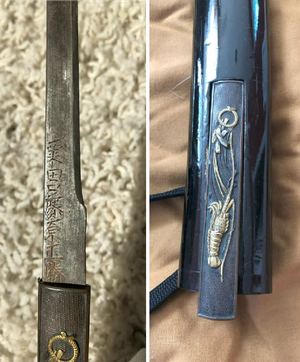
Notes
- Only 93 pupils in 23 schools were involved.
- “Watch Japan!” American Economist, July 13, 1917, 17.
- “Japanese Wed 2nd American on ‘Gentleman’s Agreement,’” New York Tribune, December 8, 1920, 4. See also “Settlement Sought of Ohashi Estate,” New York Herald, September 4, 1921, 5.
- “Brief Peace Notes,” The Advocate of Peace 74, no. 3 (March 1914): 56.
© 2025 Aaron Cohen


